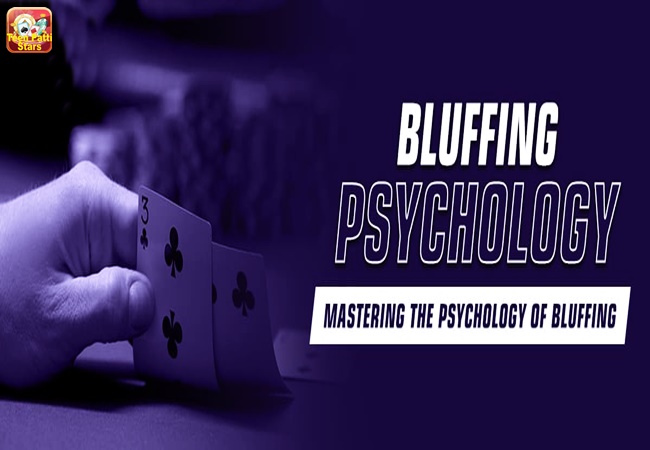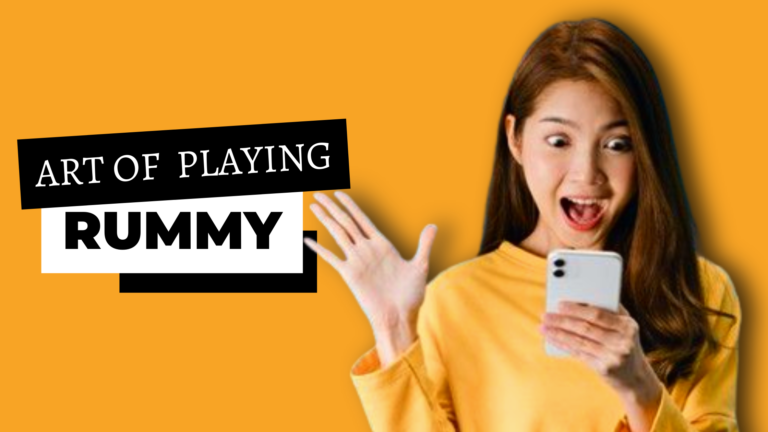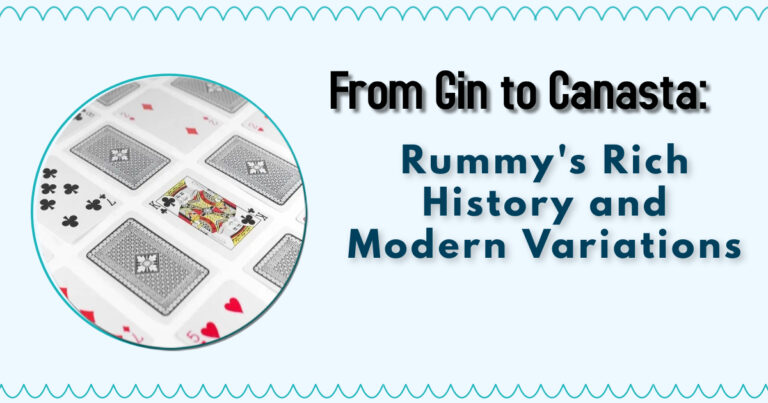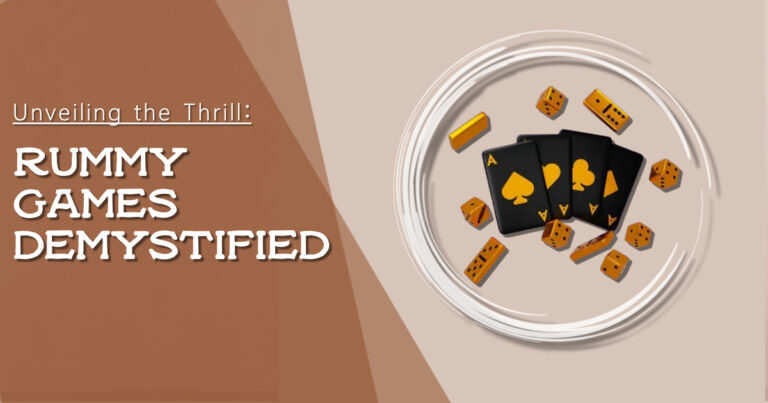Psychological Aspects of Bluffing in Teen Patti and Rummy
Bluffing is a fascinating psychological tactic used in card games such as Teen Patti and Rummy games, both immensely popular in South Asia, showcasing various aspects of bluffing. It involves deceiving opponents by making them believe something about your hand that isn’t true. In these games, bluffing can be an art form, rooted in understanding human psychology, decision-making, and social behavior. This essay delves into the psychological aspects of bluffing in these games, exploring how players use bluffing to manipulate their opponents, the cognitive processes behind it, and the factors that determine the success or failure of a bluff.

1. The Concept of Bluffing
Bluffing is the act of creating a false impression about the strength of one’s cards. In Teen Patti, for example, players are dealt three cards and must be based on their perceived hand strength. In Rummy, players must form valid sets and sequences, and while bluffing is less prominent than in Teen Patti, it still plays a role, particularly in creating an impression of readiness to declare. The goal of bluffing is to make opponents fold stronger hands or to push them into making decisions that benefit the bluffer, highlighting key aspects of bluffing.
Bluffing can take several forms, including overplaying a weak hand or underplaying a strong one, depending on the situation. Successful bluffing requires a deep understanding of human psychology, including how opponents read and respond to signals. In both Teen Patti Stars and Rummy, successful bluffers are skilled at creating uncertainty and manipulating perceptions.
2. Cognitive and Emotional Factors Behind Bluffing
Bluffing in card games is both a cognitive and emotional exercise, encompassing various aspects of bluffing. It requires the bluffer to maintain composure, calculate probabilities, and read their opponents—all while controlling their own emotional responses.
a) Cognitive Load and Bluffing
Bluffing introduces significant cognitive load, as players need to juggle multiple mental tasks simultaneously. A player must track the cards, estimate the probability of others having certain cards, calculate betting patterns, and assess their own risk tolerance. At the same time, they must focus on how they are being perceived by others and adapt their behavior accordingly, highlighting the various aspects of bluffing.
In Teen Patti, players must constantly evaluate the situation: should they bluff now, fold, or raise? In Rummy, while there is less direct confrontation, bluffing still requires players to mislead others about their progress toward completing a valid hand. Cognitive biases such as confirmation bias and anchoring can influence how players process information, potentially making them more susceptible to being bluffed or overestimating the success of their own bluff.
b) Emotional Control
Emotions play a significant role in bluffing. Fear, anxiety, and excitement are natural reactions in games of chance. However, a successful bluffer must control these emotions, or at least mask them. This requires a level of emotional intelligence, as the ability to maintain a calm, confident demeanor can deter opponents from calling a bluff, showcasing key aspects of bluffing. Conversely, revealing emotions such as nervousness or hesitation can give away a player’s true intentions.
In Rummy, emotional control is essential to avoid telegraphing to opponents that you are one card away from completing your hand, reflecting key aspects in Teen Patti. In Teen Patti, where betting and bluffing are more intense, emotional regulation is even more critical.
3. Social Psychology of Bluffing: Reading Opponents
Bluffing is as much about understanding your opponents as it is about concealing your own intentions. Social psychology plays a key role in how bluffing unfolds in Teen Patti and Rummy. Understanding human behavior, non-verbal cues, and group dynamics can provide a significant edge, especially when considering the variations in Teen Patti and Rummy.
a) Non-Verbal Cues and Body Language
In live versions of Teen Patti and Rummy, non-verbal cues like body language, facial expressions, and hand movements can provide critical information about whether a player is bluffing. Skilled players learn to read these cues and develop strategies to counteract them. For instance, a player who appears overly confident might be overcompensating for a weak hand, while a player who seems nervous might actually be sitting on a strong hand.
Conversely, expert bluffers know how to manipulate their own non-verbal cues. They may intentionally act in ways that suggest weakness or strength, depending on the desired outcome. This aspect of bluffing taps into the broader domain of deception psychology, where controlling what others perceive and believe becomes paramount, emphasizing the various aspects of bluffing.
b) The Role of Group Dynamics
In a multiplayer setting, group dynamics add another layer of complexity to bluffing. Players may form alliances, compete for dominance, or try to establish themselves as leaders in the game, all of which are important aspects of bluffing. Bluffing can disrupt these dynamics, creating doubt and confusion. For example, a player who consistently bluffs can throw off the expectations of others, causing them to second-guess their own decisions.
In Teen Patti, a player might bluff repeatedly to project an image of aggressiveness, only to play conservatively later on when it counts. In Rummy, a player may feign disinterest or play in a seemingly erratic way to mislead opponents about their true progress in forming sets, highlighting different aspects of bluffing.
4. Risk Perception and Bluffing
One of the most important psychological aspects of bluffing is risk perception. Different players have different thresholds for risk, and this influences when and how they bluff. Some players are risk-averse and will rarely bluff unless they feel very confident, while others are risk-takers who bluff frequently, even with poor hands.

a) Overconfidence and the Dunning-Kruger Effect
Overconfidence is a common cognitive bias that can affect both bluffers and those being bluffed. The Dunning-Kruger effect, which refers to the phenomenon where individuals with low ability tend to overestimate their competence, can lead to poor bluffing decisions. In Teen Patti, this might manifest as a novice player believing they can bluff an experienced opponent, despite lacking the necessary skills or understanding of the game. Conversely, an experienced player may sometimes underestimate the novice, leading to a successful bluff against the odds, showcasing different aspects of bluffing.
b) Risk-Reward Calculation
Effective bluffing also requires a strong grasp of risk-reward calculations. Players must weigh the potential benefits of a successful bluff against the consequences of being caught, making it one of the variants for all ages. In Teen Patti, the stakes can rise quickly, and players who bluff too often risk losing large sums if their bluffs are called. Similarly, in Rummy, a poorly timed bluff can result in a rapid loss if the opponent declares unexpectedly.
5. Bluffing as a Long-Term Strategy
Bluffing isn’t always about immediate gains; it can also be used as part of a long-term strategy, illustrating various aspects of bluffing. A player may bluff early in the game to establish a reputation as an aggressive risk-taker, then use that reputation to their advantage later on, demonstrating key aspects of ?bluffing. By conditioning their opponents to expect certain behaviors, a player can manipulate the flow of the game and catch others off guard when they finally play a strong hand.
In Rummy, bluffing can be more subtle but just as effective over time. By consistently discarding cards that suggest a different strategy, a player can mislead opponents about their goals, causing them to discard valuable cards or fail to block key moves.
6. The Ethics of Bluffing
The psychological elements of bluffing raise questions about the ethics of deception in card games. In Rummy, emotional control is essential to avoid telegraphing to opponents that you are one card away from completing your hand, which ties into various aspects of bluffing. Some players may struggle with the moral implications of bluffing, while others embrace it as part of the competitive nature of the game.
Psychologically, the ability to bluff without guilt or hesitation can be a significant advantage, highlighting important aspects of bluffing. Players who view bluffing as a strategic tool rather than a moral dilemma are more likely to succeed in games where deception is key.
Conclusion: Aspects of Bluffing
Bluffing in Teen Patti and Rummy is a rich and complex psychological phenomenon that combines cognitive, emotional, and social factors, reflecting the evolution in Teen Patti and Rummy. The ability to deceive opponents, control emotions, and read others’ behaviors is essential for successful bluffing. Understanding how to manipulate risk perception, manage group dynamics, and use bluffing as a long-term strategy can greatly enhance a player’s effectiveness. Ultimately, bluffing is a test of psychological insight, emotional intelligence, and adaptability, making it one of the most intriguing aspects of card games like Teen Patti and Rummy.








